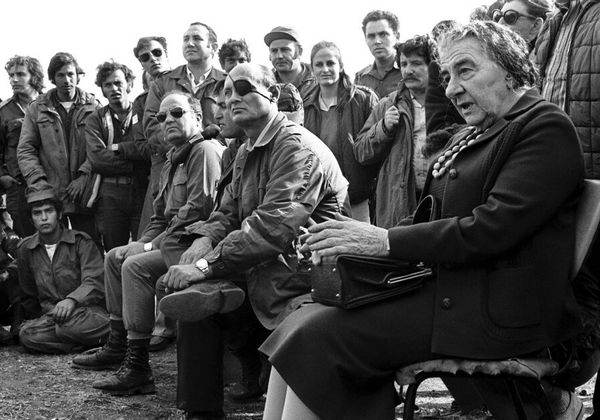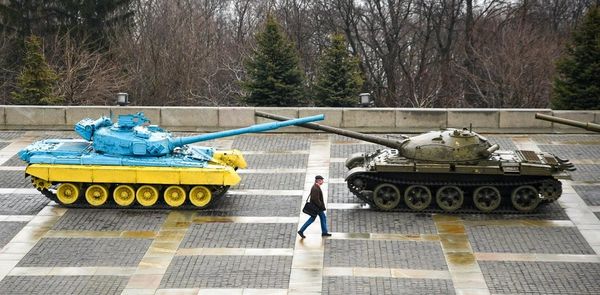
Russia and Ukraine share much of their history. At times they have taken different paths, but never have they been at war like this – a war over history itself. Putin has denied the right of Ukraine to exist as a sovereign state. The ideas fuelling his aggression have their roots in ancient Russian myths and ideologies which I explore in my forthcoming book, The Story of Russia. It retells the Russians’ history in part through the myths and stories they have told themselves about their past.
These five books have done as much as any to shape my understanding of the complex region.
Simon Franklin and Jonathan Shepard: The Emergence of Rus 750-1200

As Putin keeps reminding us, Russia has its origins in Kyivan Rus’, the loose medieval state founded by the Vikings on the river routes between the Baltic and the Black Sea. Nationalists in Russia and Ukraine have long competed for the right to claim the Kyivan legacy, from which both countries received their religion, written language and cultural identity as part of Europe through Byzantium. Yet as these two leading scholars show, neither “Russia” nor “Ukraine” can be traced back to this distant past so easily. The history of Kyivan Rus’ is contained in 12th-century chronicles by monks which read much like fairytales. They were foundation myths rooted in religious ideologies linking Kyiv’s foundation to God’s plan in the Book of Genesis.
Deploying their sophisticated literary skills, Franklin and Shepard tease out the meanings of the chronicles’ ideas in their historical context. They draw on archaeology, birch-bark writing, art and architecture to illuminate this vibrant multi-ethnic culture based on the long-distance river trade between Europe, the Russian forest lands, and the markets of Byzantium and the Arab caliphates.
Nikolai Gogol: Evenings on a Farm Near Dikanka

Although he wrote in Russian, Gogol was Ukrainian. He sprang to fame in 1832 with this collection of Ukrainian tales told by “Rudy Panko, beekeeper”. Readers were delighted by their earthy peasant dialect and coarse humour. Ukrainian folklore became popular. The openness and freedom of the southern steppe, which Gogol pictured in these tales, stirred the Russians’ fascination with the Cossacks, the caste of brigands and mercenary soldiers who lived on the “wild lands” between Russia, Polish-ruled Ukraine and the Ottoman empire.
Gogol’s next collection, Mirgorod (1835), included Taras Bulba, a hugely popular story about a Cossack and his sons who join the Zaporozhian Host in their war against Poland. This was the war that brought the Cossack Hetmanate, the “first Ukrainian state”, into union with Russia in 1654.
Mikhail Bulgakov: The White Guard

Bulgakov was another Russian writer from Ukraine. He was born in Kyiv, where this novel is set in 1918, during the first year of the Russian civil war. The Bolsheviks have taken power in Russia; the White Guards, their enemies, have fled to Ukraine, where they hope to rally the Cossacks. And although Ukraine has declared its independence, it remains at the mercy of the German occupying troops, while Symon Petliura’s Ukrainian nationalists are camped outside the capital.
The story centres on the Turbin family, remnants of the monarchist intelligentsia, whose world collapses in the chaos and confusion of the fighting around Kyiv, ending with the Soviet invasion of Ukraine. Published in 1925, the novel was dramatised as The Days of the Turbins. Stalin loved the play and saw it many times. He viewed it as a parable about a class and way of life destined for destruction by Russian might.
Anne Applebaum: Red Famine: Stalin’s War on Ukraine

The Ukrainians call it the Holodomor – the extermination (mor) by starvation (holod) of more than four million of their countrymen in 1932-3. Nowhere else in the USSR was the famine of those years so terrible. Four-fifths of its victims were Ukrainians – peasants stripped of all their property when Stalin’s regime forced them into the collective farms and then requisitioned their last stocks of seed and food, until they starved.
Drawing on the work of Ukrainian scholars, Applebaum has given us the best account in English of Stalin’s war against Ukraine. She is sympathetic to the Ukrainian view of the famine as an act of genocide, not in the sense that Stalin sought to kill all Ukrainians, as Hitler aimed to kill the Jews, but in the sense that he intended to “physically eliminate the most active and engaged Ukrainians” in order to prevent the re-emergence of a nationalist movement led by the Ukrainian elites.
Anatoly Kuznetsov: Babi Yar: A Document in the Form of a Novel

This extraordinary book began as the notebook of a teenage boy, half-Russian, half-Ukrainian, who witnessed the events surrounding the Nazis’ killing of 33,771 Jews in Kyiv’s Babyn Yar ravine in September 1941. When it was published in a Soviet journal in 1966, it was heavily censored. The antisemitism of the Stalinist regime was still embedded in the Soviet cultural establishment, which saw only “Soviet” victims of the war. “There are no monuments over Babyn Yar”, as Yevtushenko wrote in his famous poem about the massacre in 1961.
Kuznetsov defected to the west, smuggling out his complete text on film. A monument to the Jewish victims was finally erected by the newly independent Ukrainian government in 1991. Today, 100,000 Jews call Kyiv their home. President Zelenskiy is one of them. Putin’s missiles, in their effort to destroy the nearby TV tower, hit the monument to Babyn Yar.
Orlando Figes is an award-winning author of 10 books on Russian and European history; @orlandofiges










